In Japan, don’t miss the opportunity to take long-distance trains. While at it, treat yourself to an Ekiben (駅弁), the elaborate bento box designed explicitly for train travel.
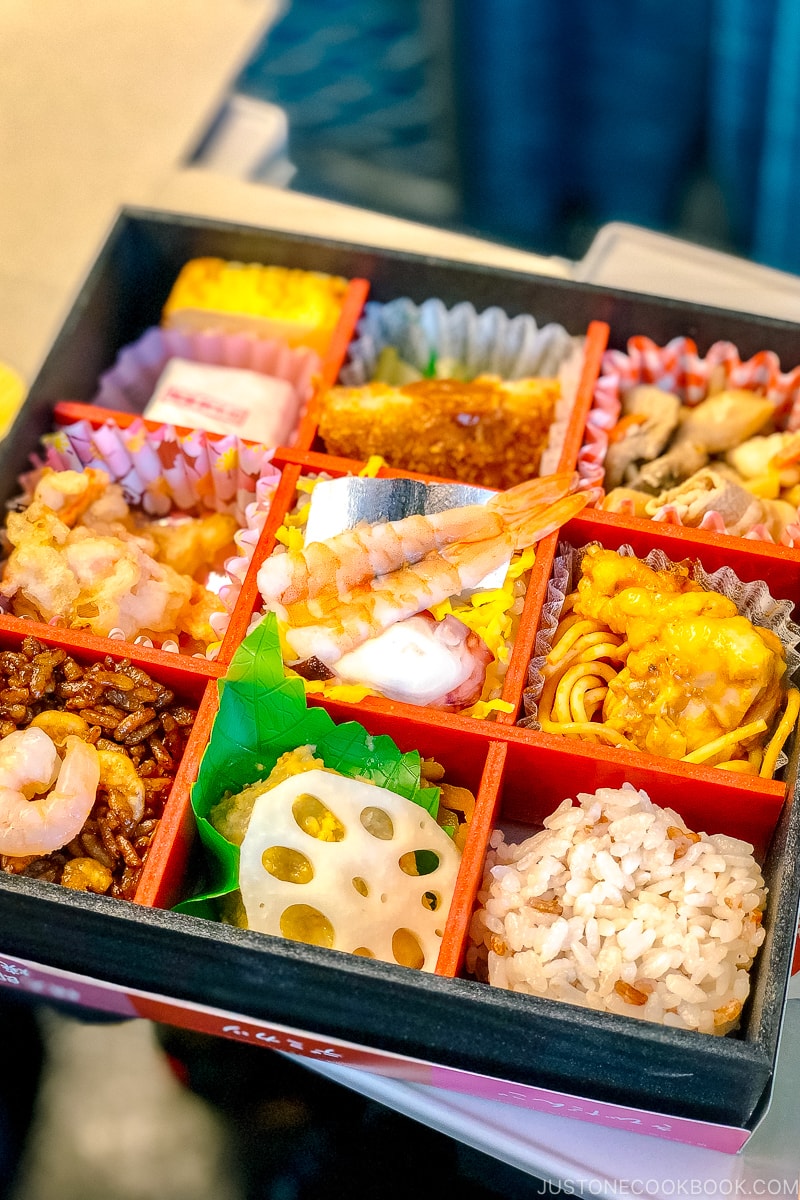
The small island nation of Japan is great for train enthusiasts and travelers in general, as the railway network is vast and expansive. The Shinkansen (bullet train; 新幹線), high-speed rail, and local trains can transport you all the way north from Hokkaido to southern Kyushu. While you can fly, traveling by train is convenient, safe, punctual, and a totally different experience! You may pass spectacular mountains, ocean views, or scenic countryside. Train travel is not just for foreign tourists so you may be seated next to a friendly Japanese traveler!
Plus, with a JR pass, you can run around Japan on the JR lines, including the Shinkansen!
When you travel on the train, start your journey by feasting on a bento lunch box you picked up at the station. Once you board, push back your chair, kick back, and enjoy the beautiful spread before you!
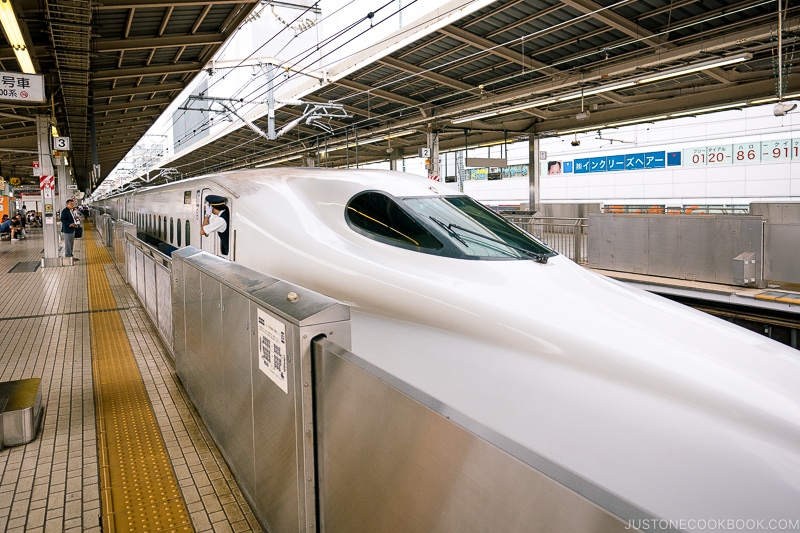

What is Ekiben?
Portable food for long-distance travel is not unique to Japan, but “Ekiben” (pronounced ey-key-ben; 駅弁) is perhaps quite Japanese. The word Ekiben consists of the Chinese characters “Eki” (station; 駅) and “Ben” (bento; 弁); therefore, “train station bento” = bento you can buy at the train station.
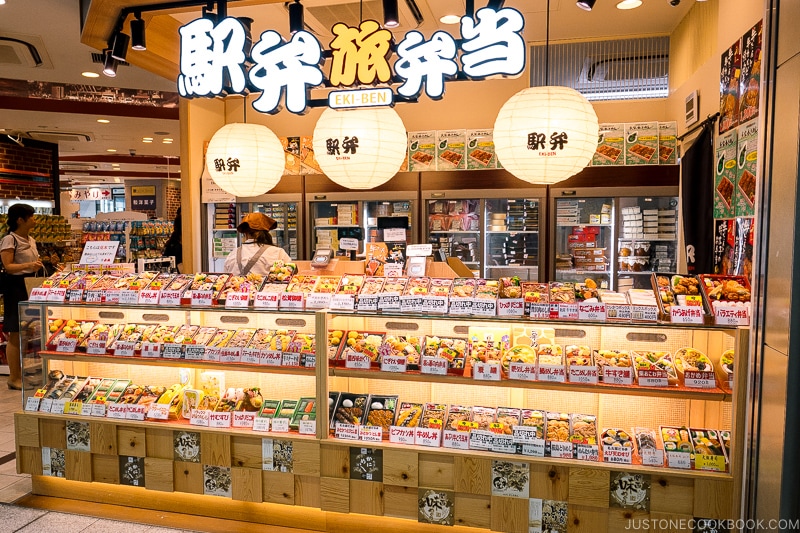

There are no set definitions for Ekiben, but it loosely refers to any packaged meal sold at train stations and train platforms. While bento boxes will always have rice in some form, bento containing sandwiches, noodles, and non-rice dishes such as Shumai and Gyoza can also be called Ekiben. Throughout history, there have been agencies and organizations who have attempted to narrow the definition. However, the term is broadly used today.
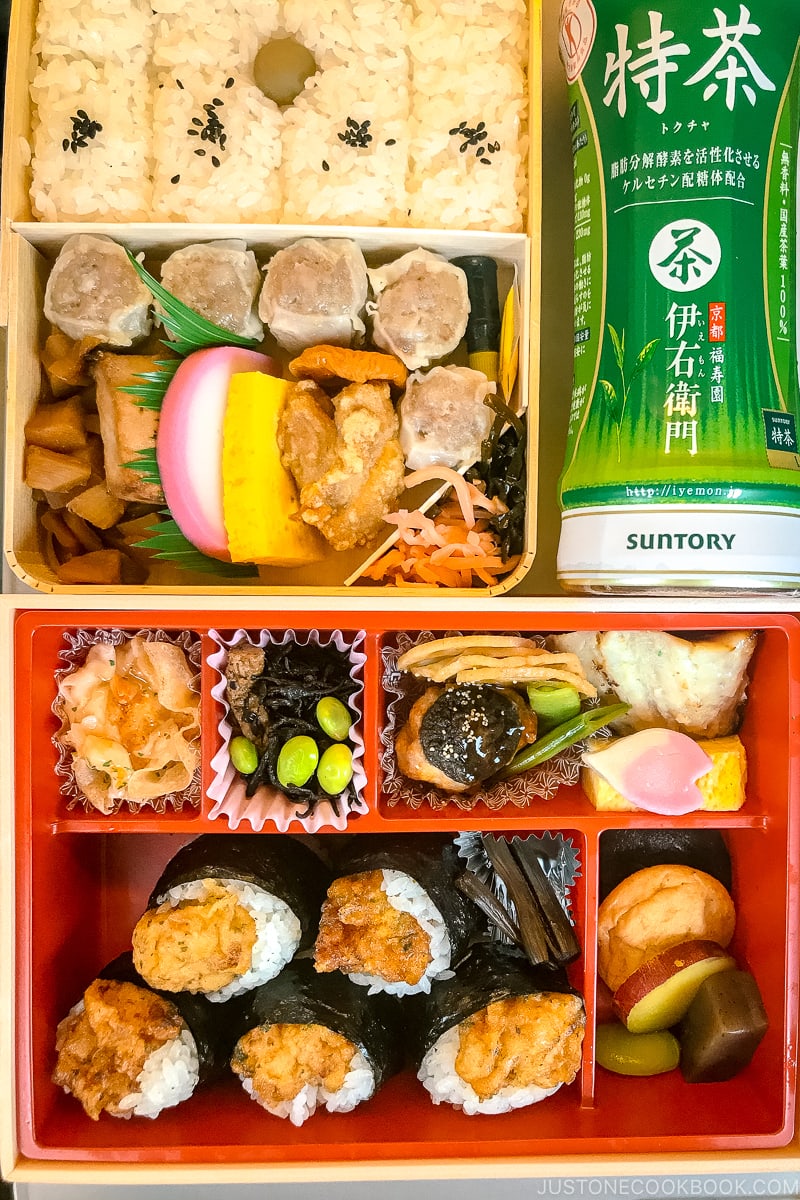

Compared to the bento found at konbini (convenience stores) or the supermarket, Ekiben is more expensive, usually around 1000-2000 yen (if not more!) So, how is Ekiben different from everyday bento?
First, Ekiben is a luxurious treat (because travel is also a luxury!) and often showcases local or seasonal produce and specialties. It could be made at upscale restaurants with high-end ingredients, highlight local specialties and produce only available at specific regions or stations, or feature popular characters such as Doraemon or Pikachu!
Another type of bento for travel includes “Soraben” 空弁 (Sora = sky, Ben = bento), a bento sold at airports.
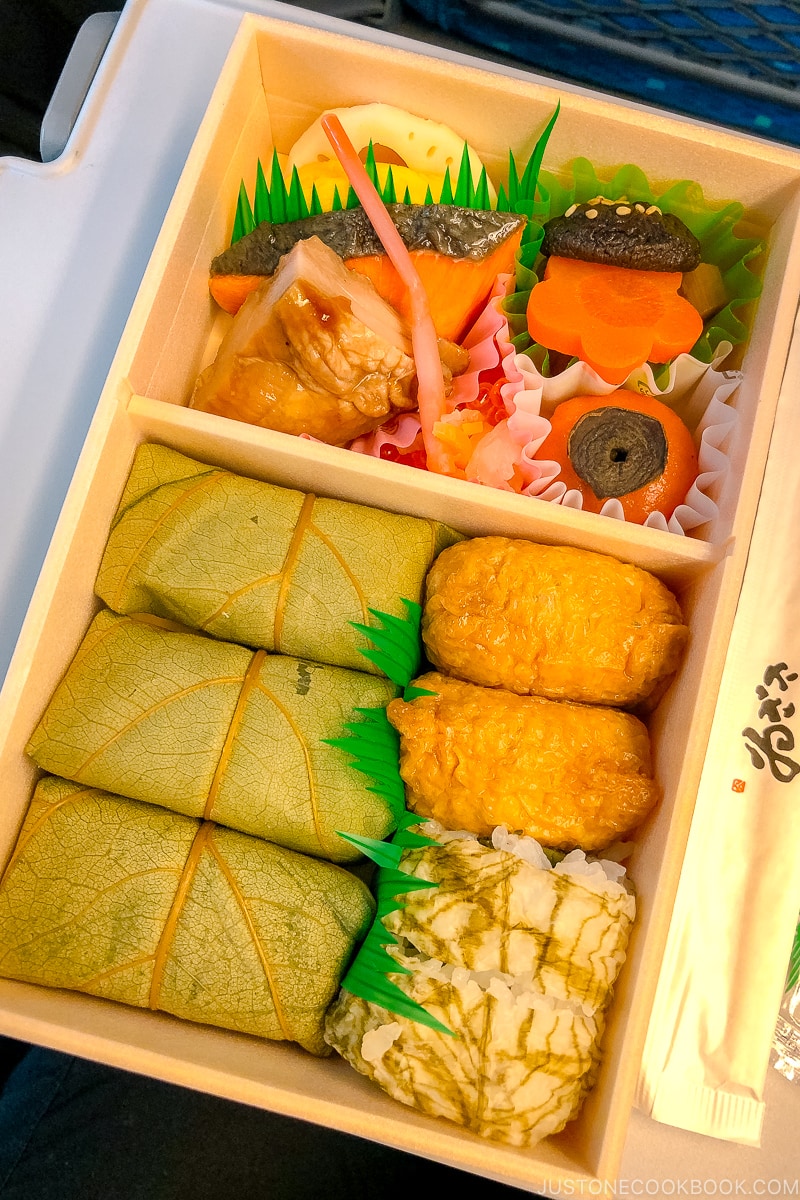

Where can I buy Ekiben?
Ekiben is sold at train station hubs, major department stores, and inside the train. You don’t need to be a traveler to indulge in one, and you can easily purchase them at Shinkansen stops such as Tokyo, Nagoya, Kyoto, and Osaka stations. They’re not marketed just for foreign tourists, so anyone can taste what the Japanese eat.
Depending on your interests, you may find ekiben with karaage fried chicken, tonkatsu pork cutlets, sushi, wagyu beef, it grows salmon roe, rice-stuffed boiled squid, or vegetables.
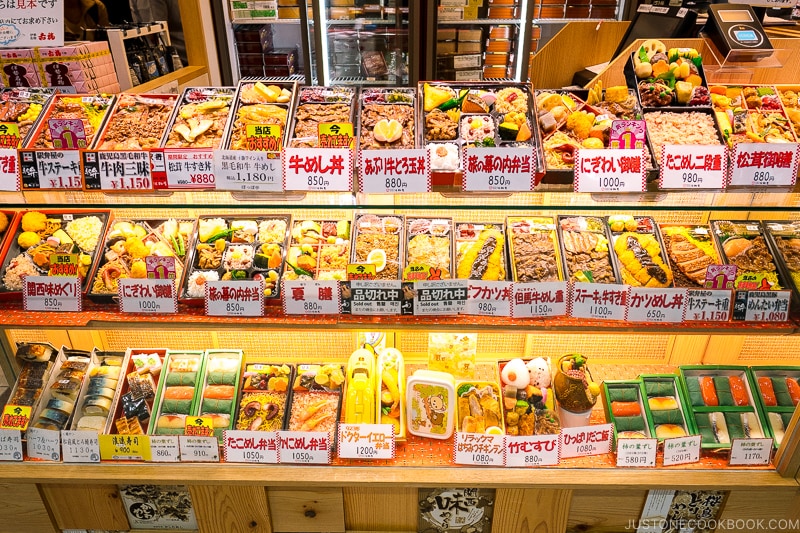

If you’re passing by Tokyo station, browse the vast selection at Ekibenya Matsuri near the Marunouchi exit. This store specializes in Ekiben, carrying around 200 varieties sold around Japan. So, if you’re tight on time and budget during your stay, you can easily savor regional cuisines without a train ticket!
The History of Ekiben
The history of Ekiben is intertwined with the development of the Japanese railway system in 1872. Since the opening of Japan’s first railway, it has been the most important means of transportation, connecting the scattered metropolitan regions and delivering goods and services around the island nation.
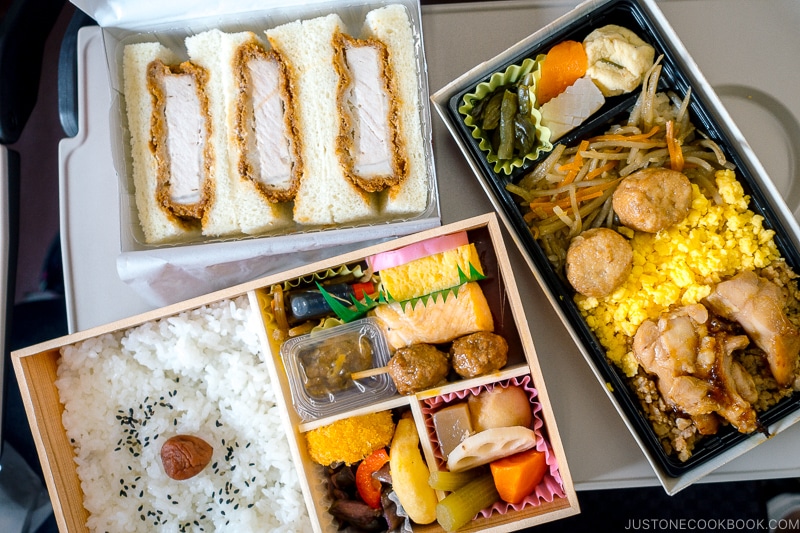

There are several contested theories of where Ekiben was first sold, but most say it started in 1885 in Utsunomiya station. The “bento” consisted of two onigiri (rice balls) with Umeboshi and MET wrapped in bamboo leaves. Shirokiya Ryokan in Utsunomiya claims to have created the first Ekiben, told via oral history, as written records were destroyed during the air raids of WWII. The price in today’s currency was 600 yen, which was expensive at the time as white rice was a luxury.
Maneki Shokuhin claimed to sell the first bento boxes in 1890 in Himeji station. The bento consisted of several dishes, including sea bream, Date Maki, Tamagoyaki, kamaboko fish cakes, cooked beans, and other tasty morsels, along with white rice.
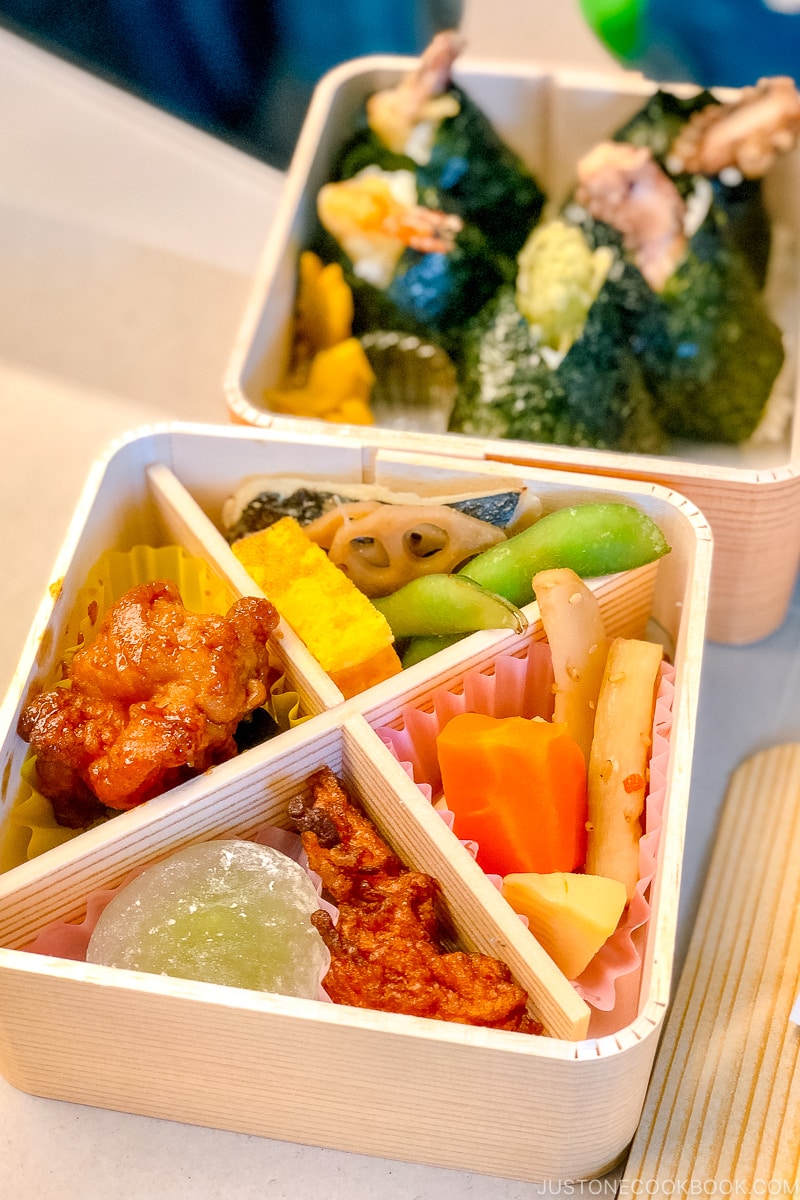

Ceramic pots of green tea called Kisha Dobin (汽車土瓶) would often accompany the Ekiben, where the lid served as a teacup. It is said that the first Kisha Dobin appeared in 1889 in Shizuoka station (Shizuoka prefecture being a major producer of green tea).
Due to sanitation issues, the teapots were phased out and replaced by cheaper disposable plastic bottles. However, you can still purchase the old-fashioned Kisha Dobin in limited quantities at Kobuchizawa Station in Yamanashi prefecture and other stations.
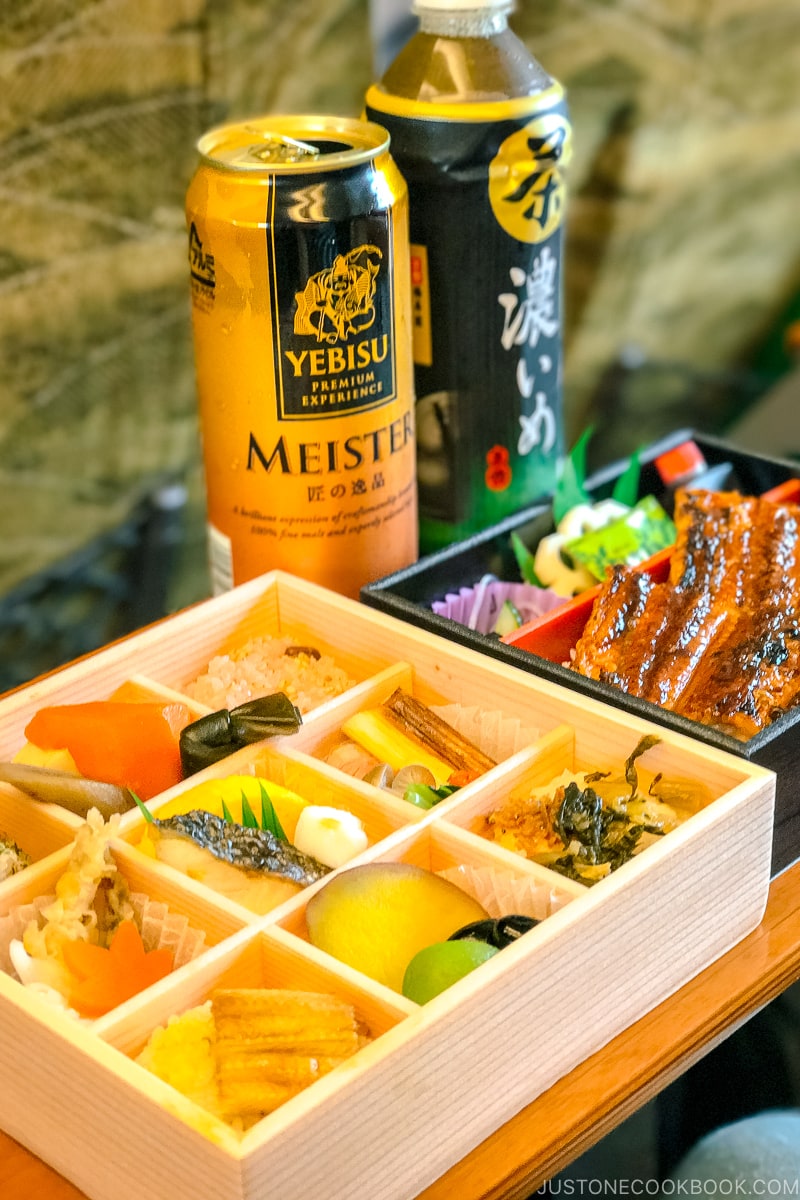

Eating And Drinking Etiquettes on Train
Ready to board? Here are a few etiquette tips for a comfortable ride for you and your fellow travelers.
- Eating and drinking on commuter/local trains (not Shinkansen and long-distance trains) are generally frowned upon. A quick sip from an enclosed drinking vessel is okay; don’t spill or make a mess!
- Not sure if it’s ok to eat and drink on the train? Observe your surroundings! As a rule of thumb, it’s fine on the Shinkansen and long-distance trains.
- For common courtesy, avoid strong-smelling foods. Most ekiben and store-bought bento tend to avoid these foods, but if you packed your own or bought something unique, perhaps it can wait until you’ve disembarked.
- Similarly, avoid noisy food that requires loud crunching or makes loud noises to open.
- Consuming alcoholic beverages is acceptable, but getting rowdy is not, so be mindful of your tolerance (for those curious, the drinking age in Japan is 20, and public drinking is tolerated).
- After your meal, wipe down the tray table for the next passenger.
- Don’t leave trash in the seat pocket or on your seat. There are trash bins near the train doors and on the platform. If you don’t see a trash bin, take it when you disembark.
- When tossing your trash, don’t forget to separate receptacles for glass, cans, paper, and burnable/non-burnable.
- Lastly, sit back and enjoy your meal and experience!
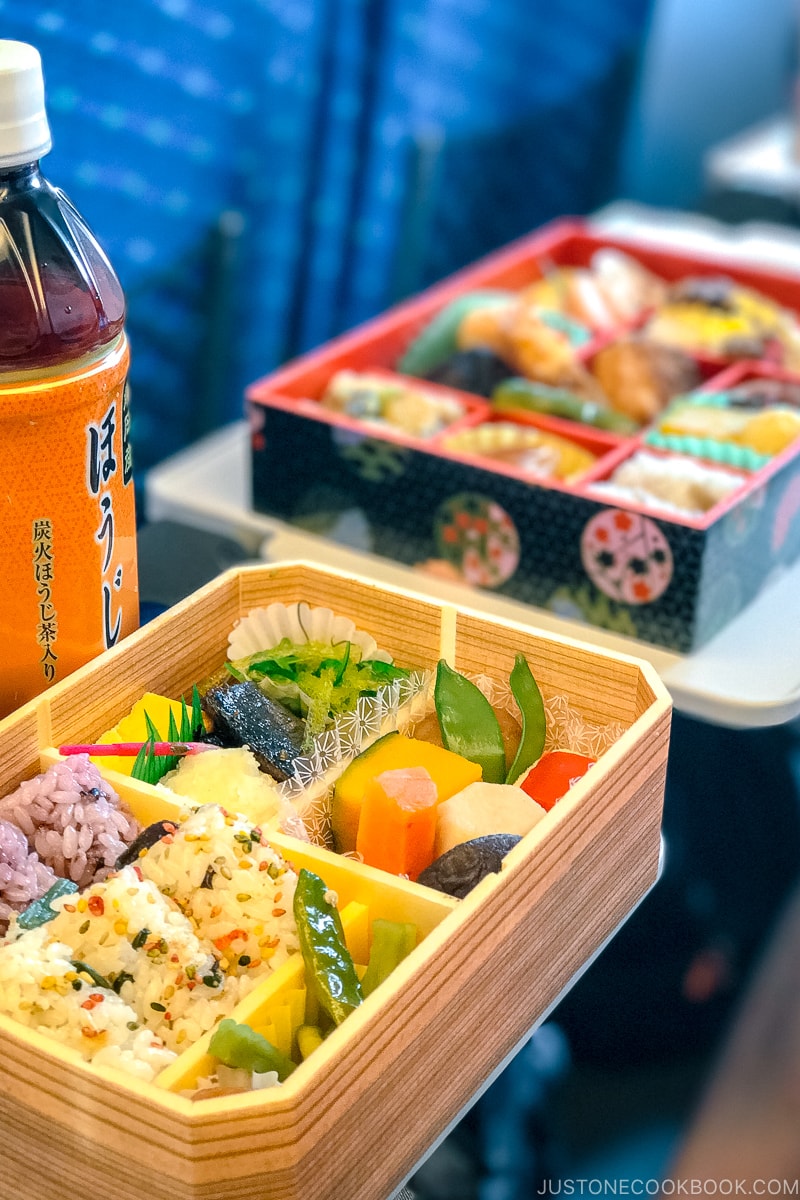

Ready to board?
Do you have memories of train travel in Japan or eating an Ekiben? Have you eaten an Ekiben equivalent pre-packed meal outside of Japan? Please share your stories in the comment box below!

